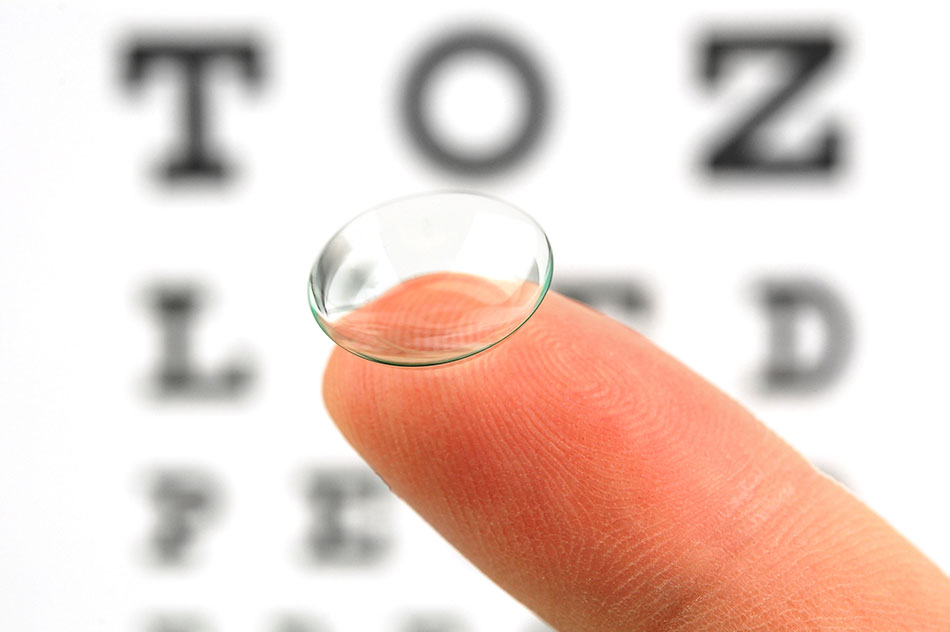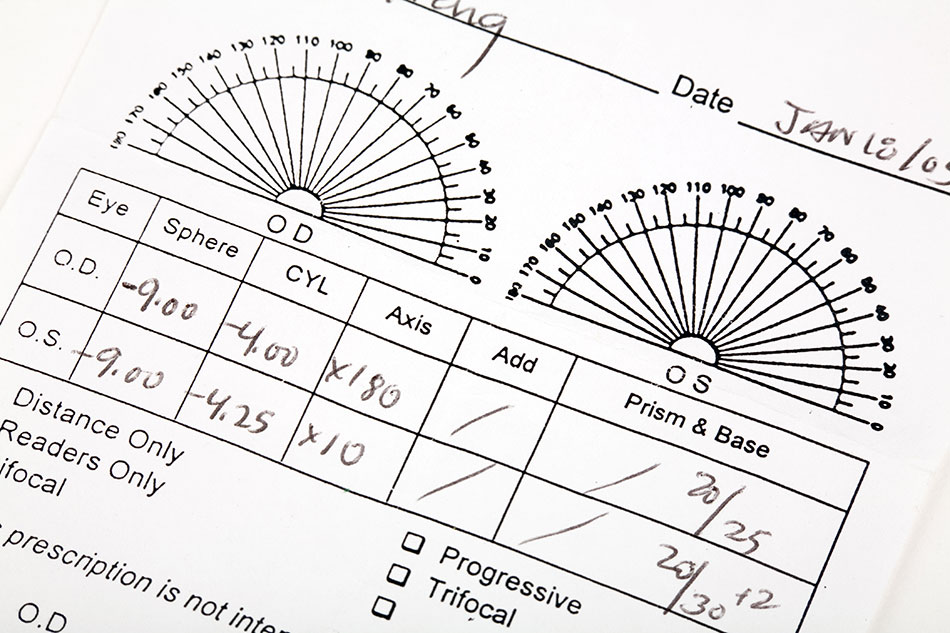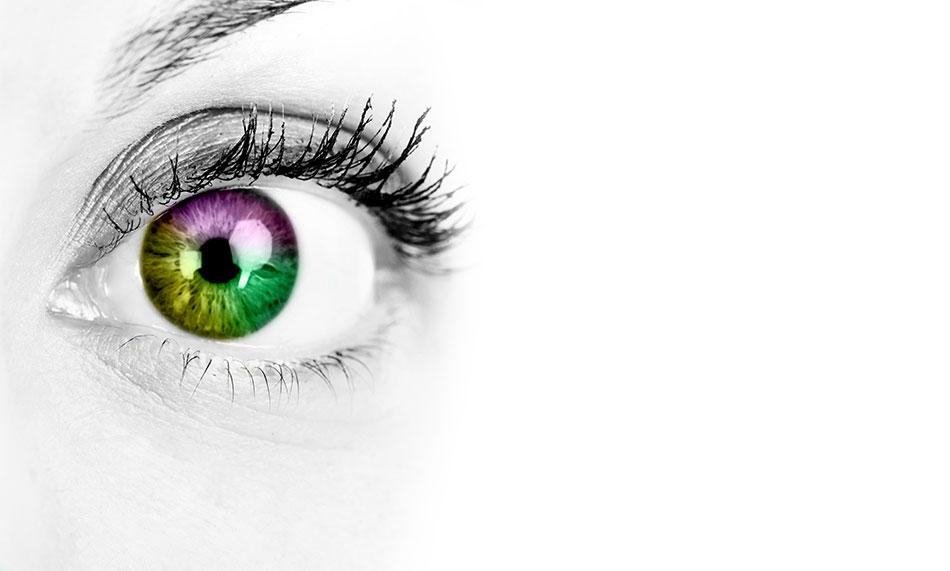A Super Simple Guide to Contact Lens Prescriptions

So you’ve endured an eye exam and survived a contact lens fitting. Your prize: a brand new contact lens prescription!
You now know if you’re nearsighted or farsighted, and whether you have astigmatism or not. But there’s more than that to the little piece of paper you hold in your hands. Your contact lens prescription is a detailed account of exactly how your vision is working. So isn’t that something you’d like to understand? To help you out, why we’ve put together a super simple guide to contact lens prescriptions. Knowledge is “PWR!”
How to Read a Contact Lens Prescription

Here are the main sections of your prescription and some indicators on what your measurements mean:
OS, OD and OU
Optometrists use the Latin terms oculus sinister and oculus dexter when a simple “left eye” and “right eye” would do. On your prescription, OS means left eye and OD means right eye. Sometimes, your prescription may use the abbreviation OU instead, meaning oculus uterque or “both eyes.” That means the measurement is the same for both of your eyes.
SPH
SPH stands for sphere. Measured in dioptres (D), sphere indicates the amount of lens power needed to correct your vision. If you have a nearsighted condition, the number you read will be a negative number. If you have farsightedness, your sphere number will be a positive number.
CYL
CYL means cylinder. This measurement is only recorded on your prescription if you have astigmatism. Astigmatism is any abnormality in the curvature of the cornea or lens. The cylinder measurement shows the lens power and curvature needed to correct the abnormality. Again, if you have nearsighted astigmatism, this figure will be a negative number. For farsighted astigmatism, it will be a positive number.
Axis
Also related to astigmatism, the axis value shows your optometrist where to place the cylinder power in your lenses. The number refers to an angle and can be anything from 1 to 180. For reference, 90 is the vertical meridian, or centre, of the eye.
BC and DIA
Base curve and diameter measurements refer to the shape and size of your eye. The base curve determines the curvature of your contact lens. The diameter measures how wide your lens will be. To ensure that your lenses fit against your cornea comfortably, these measurements must be precise.
ADD
ADD is the added magnifying power your lenses need. This additional power is only applied to the bottom part of multifocal lenses and usually ranges between +0.75 and +3.00D. If you do not need bifocal or multifocal lenses, this field on your prescription will be blank.
Get Regular Checkups
The Canadian Association of Optometrists recommends having your eyes tested every one to three years, depending on your age. Eye exams are beneficial not only for ensuring you’re wearing the right lenses but also for checking your overall eye health. Many progressive eye diseases are treatable if caught early enough during a routine exam. This is why regular visits to the eye doctor are so important.
Buying the Right Lenses

Choosing the right contact lenses for you is the next step to success. Buying contacts online gives you the opportunity to shop around for the best deals and take advantage of special offers. To buy contact lenses online, you must have an up-to-date prescription. This prescription should include the power, base curve and diameter measurements of your eye. Also, it should have both cylinder and axis data if you have astigmatism.
Different lenses come with varied wearing schedules, cleaning needs and features. Here are a few pros and cons to consider when choosing lenses.
Hard Contact Lenses
Usually referred to as rigid gas permeable (RGP) lenses, hard contacts are discs made of rigid plastic. As their name suggests, RGP lenses allow oxygen flow to the eye. They are available in tints and bifocals, and are long-lasting. However, hard extended wear lenses come with risks. They’re easier to dislodge and can trap debris on the surface of the eye. This can lead to infection.
Soft Contact Lenses
Soft contact lenses: the most popular type of lens in North America. Since they’re made from durable, flexible plastic, they’re more comfortable than hard lenses. These contacts come in disposable daily, weekly, bi-weekly and monthly varieties.
The daily wear variety is the most affordable since you remove the lenses each night and re-use them the next day. Again, these lenses come with risks, as repeated wear can cause a build-up of deposits on the lenses. These deposits, combined with bacteria, can lead to eye infections.
Although daily disposable lenses are more expensive, they don’t require any cleaning or disinfecting. Each morning, you change to a new pair of lenses. This lowers the risk of contamination.
Extended Wear Lenses
Health Canada has approved certain lenses for extended overnight wear. One example is Orthokeratology (ortho-k) lenses. These overnight lenses can temporarily treat myopia by reshaping the cornea while you sleep. They are removed in the morning and you don’t need to wear glasses or contacts.
As the day goes on, your eyes slowly revert back to their original shapes. So if you want clear vision every day, you’ll need to wear ortho-k lenses every night. Although scientists have confirmed these overnight lenses are safe, they are linked to serious infections.
There are other types of extended wear lenses. They correct vision during the day without the need to remove and clean them each night. Meaning, you can sleep with them on. But, there will always come a point when the lenses do need cleaning or replacing. When that time comes, follow the outlined schedule for each brand or lens type.
Specialized Lenses

You can further customize your contact lenses with specialized features. Some are available in bifocal or multifocal varieties and even come in hybrid form. Hybrid lenses have a hard center that’s surrounded by a soft outer ring. These lenses treat keratoconus, an irregular curvature of the cornea. Not only that, but they can also be a good solution for those who struggle with hard lenses.
Finally, for a more fun contact lens experience, look into tinted lenses! Some contacts feature cutting-edge colour technology that can completely change the look of your eyes. For example, the Acuvue Define Vivid Style range of lenses creates more expressive and enlarged eyes.
So that’s our guide to understanding contact lens prescriptions and how to choose the right lens for you. Super simple, just as we promised. Plus, you’ve even learned some Latin! As a result of this guide, we hope you can read your prescriptions much easier now.
